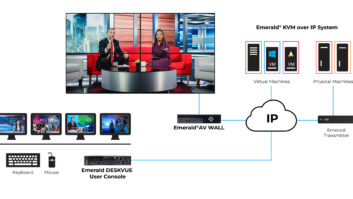As the demand for video content continues to surge, streaming platforms face the challenge of delivering high-quality, uninterrupted, interactive experiences to their audiences. Traditional cloud video architecture and content delivery network (CDN) solutions, while effective, come with significant cost challenges that stifle innovation and make experimentation incredibly difficult, particularly for emerging streaming companies. Time for a fresh approach. Adopting decentralised video architecture is a transformative move for content owners, enabling them to transcode and deliver video content much more efficiently and affordably while ensuring quality and reliability and with only milliseconds of latency. Moving beyond conventional cloud-based frameworks toward a distributed network model offers a paradigm shift in live streaming, enabling companies to scale effortlessly, reduce operational costs, and introduce real-time interactivity at a fraction of the cost. But how does distributed architecture work, and what does it mean for your streaming business? It’s time to demystify decentralised.

The bottom-line advantages
High costs associated with traditional cloud and CDN providers have become a significant barrier for many streaming businesses. These services charge premium rates for the use of their servers and compute cycles, which are used for video transcoding, storage, and delivery. These costs can quickly eat into hard-earned revenues and limit opportunities for experimentation. For emerging platforms, these costs can be particularly prohibitive, making it difficult to compete with established players who are often able to negotiate rates well below the published costs.
Distributed networks offer a compelling alternative by distributing video processing and delivery tasks across a global network of high-performance nodes, which include both professional data centres and underutilised computing resources. This distributed approach allows businesses to tap into a growing marketplace of computing power, where nodes are in constant competition to offer services at the most cost-effective rates. The result is a large reduction in operational costs enabling streaming companies to allocate more resources toward innovation rather than infrastructure — all while ensuring mission-critical reliability.
Ensuring quality and reliability with decentralised infrastructure
Cost savings alone are not enough to make distributed networks a viable alternative; they must also deliver on quality and reliability. Distributed networks achieve this through several key mechanisms designed to meet the rigorous demands of modern live streaming. When discussing distributed or decentralised video architecture, it’s common to conflate it with traditional peer-to-peer (P2P) networks. However, distributed video solutions go beyond the capabilities of these networks which rely on individual users sharing their bandwidth and computing resources with one another. While this approach can be effective for small-scale file sharing and streaming, it often falls short in terms of scalability and reliability. In contrast, distributed video architecture leverages a network of high-performance nodes across global data centres, that are always in competition to process more video, more effectively, more reliably. The higher-performing the node, the more work it will be allocated, continually powering higher levels of reliability and scale across the network.

By spreading video encoding and processing tasks across this network, distributed systems are also able to reduce latency and increase scalability. As demand grows, more nodes can be added to the network in peak locations of need, ensuring that streaming quality remains consistent, even during peak usage times. Redundancy is another crucial factor. Distributed networks are built with multiple layers of redundancy, ensuring that if one node fails or underperforms, others can take over without any impact on the viewer experience. This not only improves reliability but also protects against potential security breaches or localised disruptions. To manage the complex task of distributing video processing loads in real time, these networks employ sophisticated load-balancing algorithms. These algorithms dynamically allocate resources based on current demand, node performance, and network conditions. By continuously optimising resource allocation, decentralised networks can handle high volumes of traffic and complex, data-intensive tasks like 4K streaming and live video feeds without degradation in quality.
Decentralised networks are driving real-world innovation today
A new wave of video companies are leveraging distributed networks to push the boundaries of what’s possible in live streaming. From independent streamers and live sports producers to large-scale enterprise platforms, these businesses are finding that decentralisation offers not just cost savings, but also the ability to innovate in ways that were previously out of reach.
Features like real-time streaming are more economical and reliable, which can enable audience interaction, including live polls, Q&A sessions, and interactive storytelling to become more feasible and dynamic if your operation is underpinned by a cost-effective distributed streaming infrastructure. Distributed networks handle the increased data throughput of these interactions without sacrificing performance, enabling streamers to engage with their audiences in ways that were previously cost-prohibitive. Take Fishtank, for example, a 24/7 live-streaming reality show — opting for a decentralised approach enabled it to rapidly reach 1 million viewers while generating $3 million in revenues. Live event organisers are also benefiting from the scalability and reliability of distributed networks. Whether it’s an entertainment concert or a live sports event, these platforms can handle the intense demand of live streaming to large audiences without the bottlenecks that often plague traditional systems. This makes it possible to stream niche events for targeted audiences that might not attract the biggest viewership but still require high-quality delivery.
For companies that look beyond the cloud and embrace this new approach, the benefits are clear: greater flexibility, scalability, and the ability to grow without taking serious financial risk. Distributed video architecture will play a pivotal role in shaping the next generation of streaming, making high-quality, interactive video streaming accessible, affordable, and seriously exciting.






